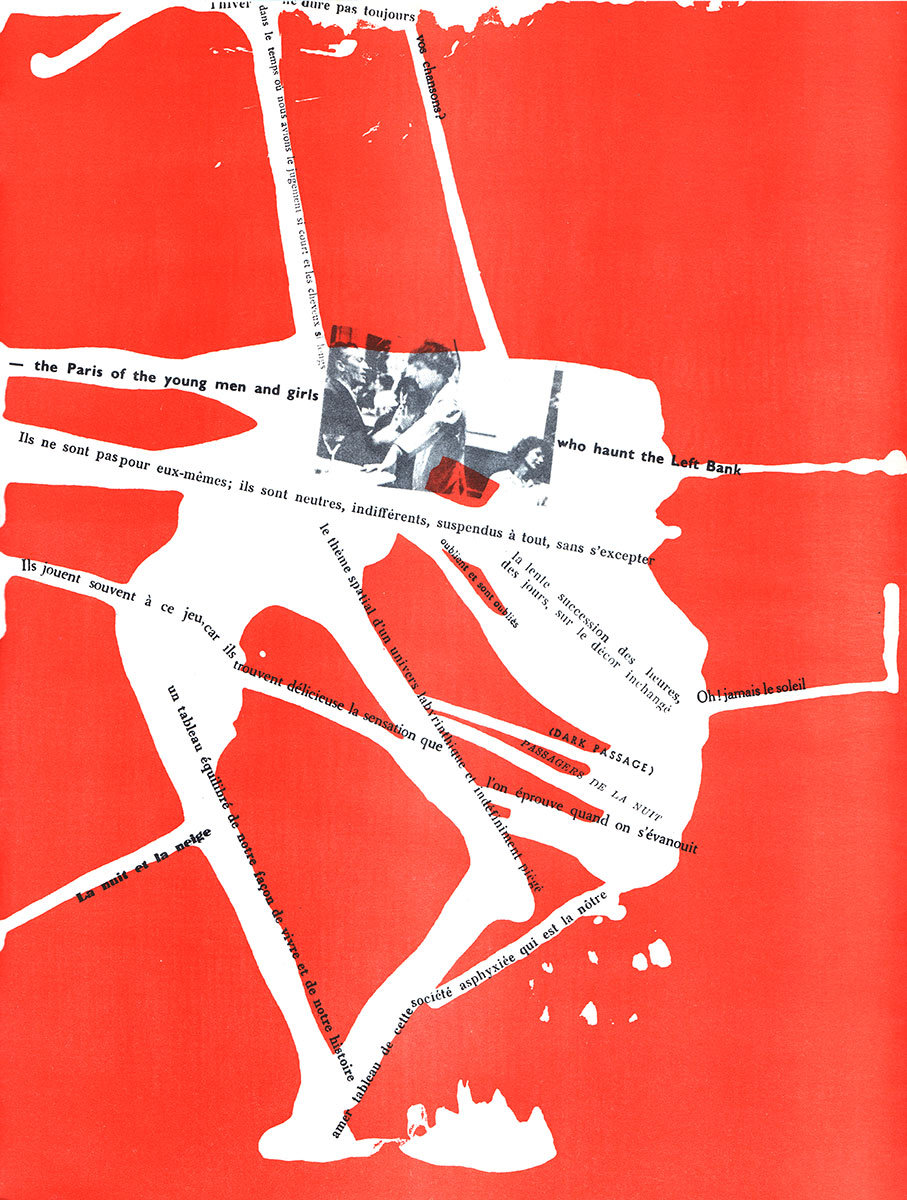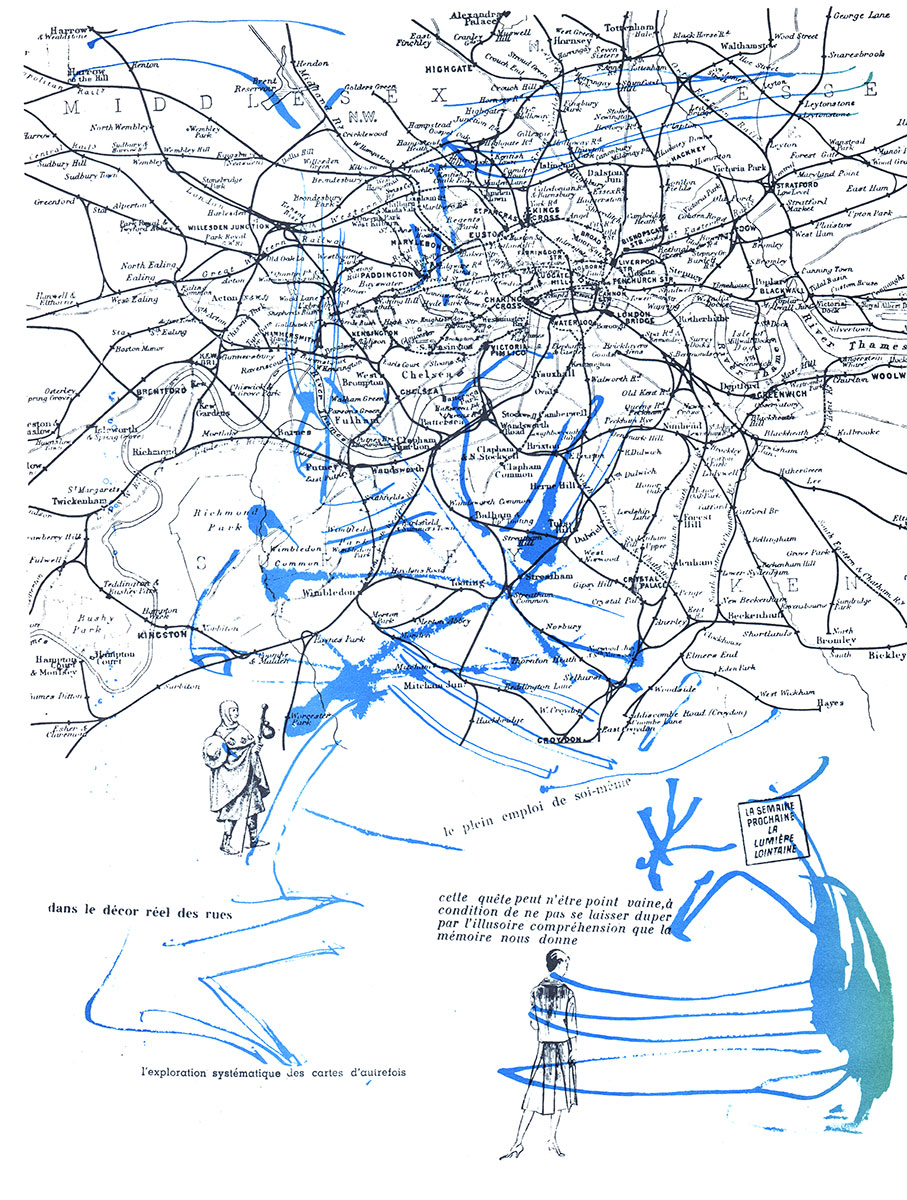Mémoires

|
|
| Authors | Guy Debord & Asger Jorn |
|---|---|
| Publisher | Permild & Rosengreen, Copenhagen |
| Publishing date | 1959 |
Mémoires is an artist's book made by the Danish artist Asger Jorn in collaboration with the French artist and theorist Guy Debord.
Jorn collaborated with Debord on two art books, the first being Fin de Copenhague in 1957, during their time as members of Situationist International. The book makes use of psychogeography, a concept close to Debord which made use of the exploration of urban environments and the emphasis of interpersonal connections to places and arbitrary routes. While the book was credited to Debord, Jorn contributed with structures portantes (load-bearing structures) in the form of ink splashes.
Mémoires consists of three sections, each separated by a page containing a date and a quote:
- June 1952, with a quote from Karl Marx. "Let the dead bury the dead, and mourn them.... our fate will be to become the first living people to enter the new life."
- December 1952, with a quote from Johan Huizinga's The Decline of the Middle Ages
- September 1953, with a quote from Soubise in a letter to Choiseul.
The work contains two separate layers. The first is printed with black ink, reproducing found text and graphics taken from newspapers and magazines. The second layer is printed using coloured inks, splashed across the pages. These sometimes connect images and text, sometimes cover them, and sometimes are seemingly unconnected. The black layer contains fragments of text, maps of Paris and London, illustrations of siege warfare, cheap reproductions of old masters and questions such as 'How do you feel about the world at the moment, Sir?' The coloured layer contains freefloating ink splashes, lines created by a matchstick loaded in ink, and a Rorschach inkblob.
Other pages deal with more personal themes, including a cartoon of the first showing of his film Hurlements en Faveur de Sade, with comments for and against, and references to Dérive, which would become known as Situationist Drift, the habit of walking aimlessly through a city in an attempt to find its spirit. Détournement ('diversion' or 'disruption') is also employed in the book to disorient the reader by creating startling collaged juxtapositions. Originally deriving from Dada,[2] détournement would become a key situationist strategy.
The last page is an orange swirl, above which reads the single sentence 'I wanted to speak the beautiful language of my century.'
- Wikipedia, Mémoires
The book is furnished with a sandpaper cover after a suggestion made by the printer, V. O. Permild. Jorn had asked for an unconventional material as a book cover.
Explore the Book
This is a preview only - view fullsize on archive.orgGallery




References
- Wikipedia, Mémoires. Accessed 2022-02-03.